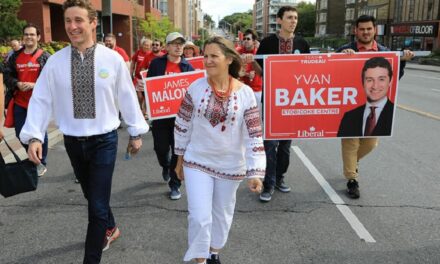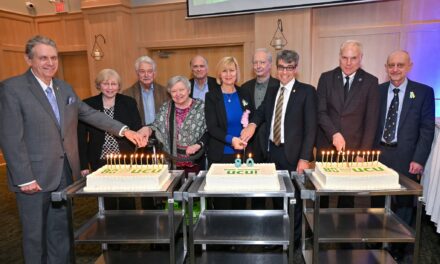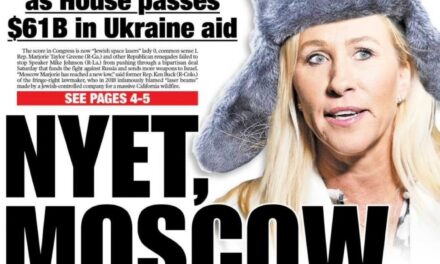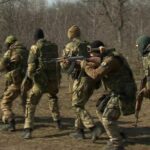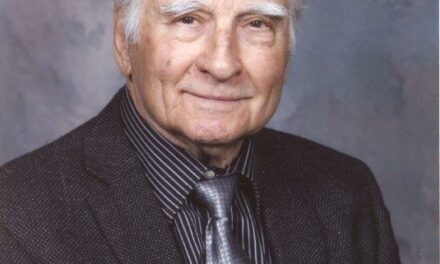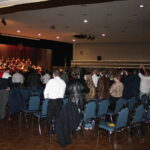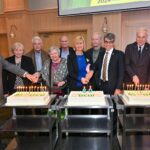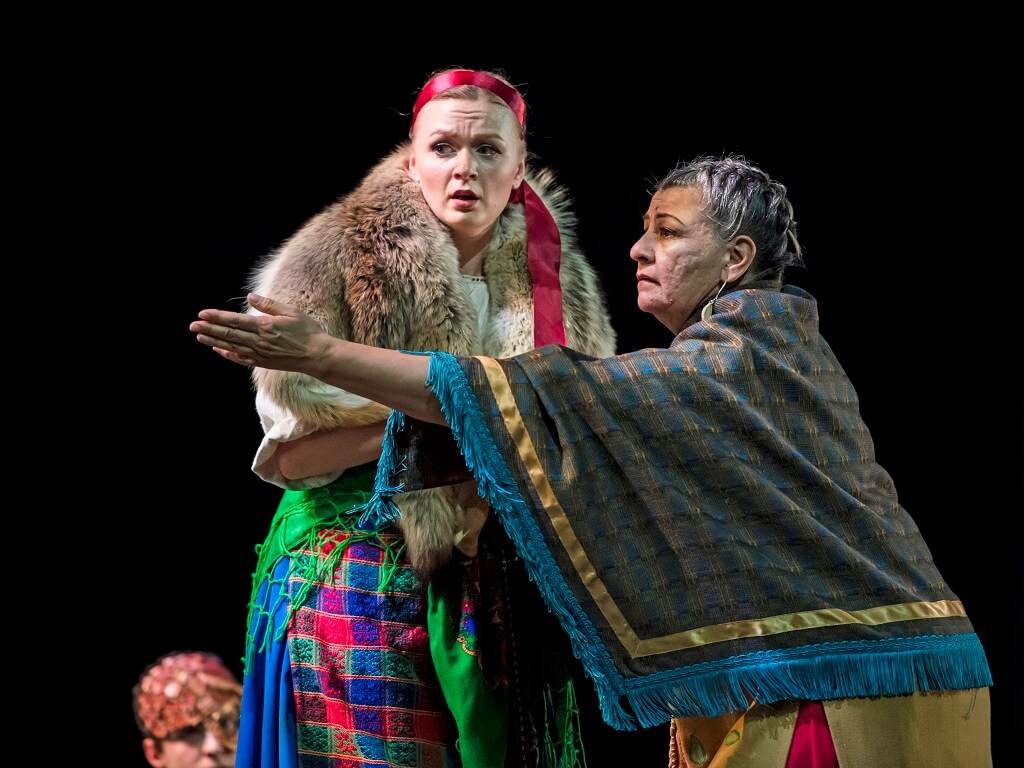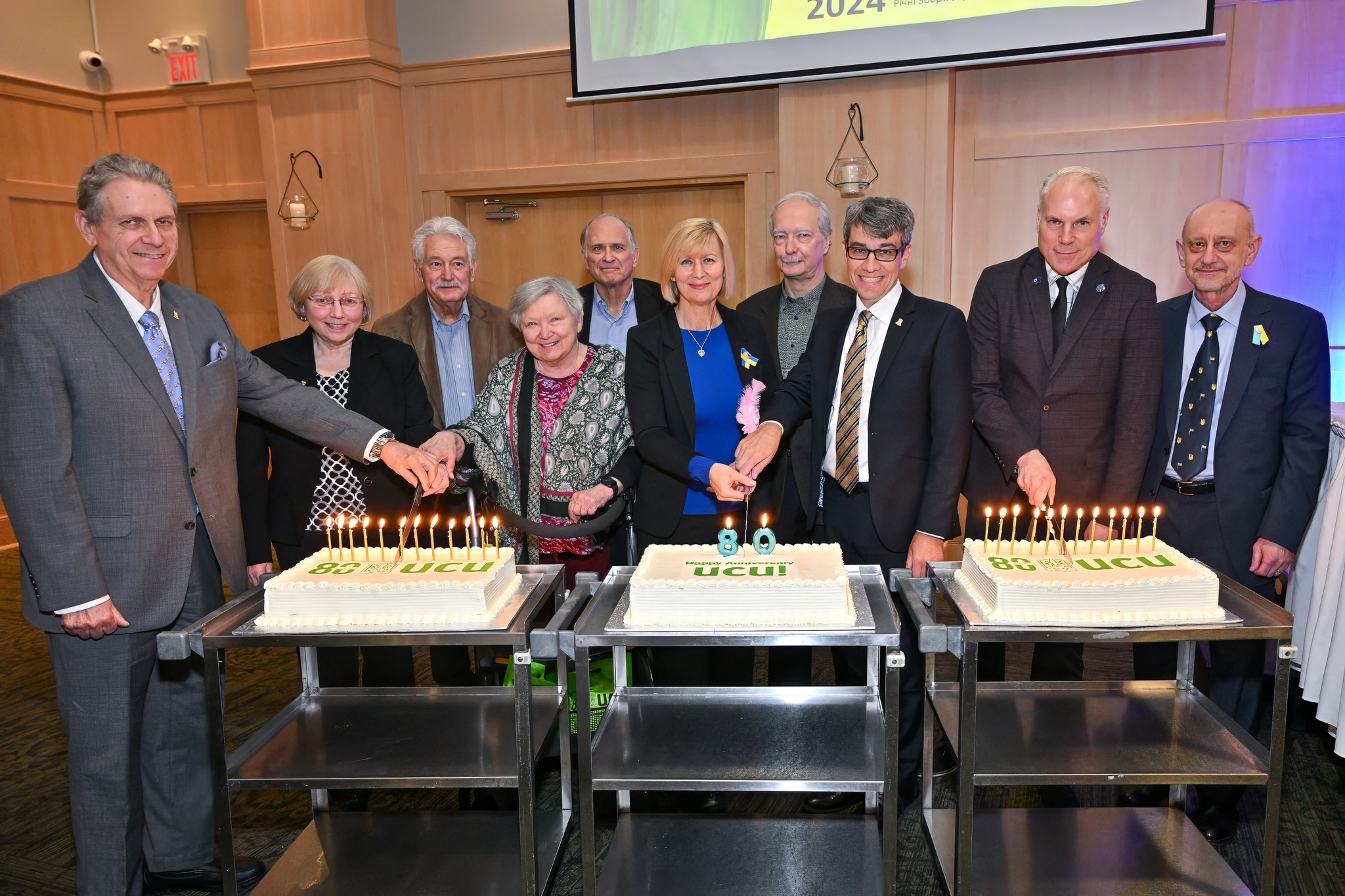Marco Levytsky, New Pathway – Ukrainian News Western Bureau.
Shumka presented a brilliant spectacle of two vibrant cultures when it merged indigenous and Ukrainian traditions in its production of Ancestors and Elders, which premiered at Edmonton’s Northern Jubilee Auditorium, April 27-28.
The evening climaxed with the Running Thunder Dancers joining Shumka for the 50th Anniversary Hopak, first performed in 2009, a more lyrical and flowing adaption as compared to their highly-energized and signature Classic Hopak.
This was no mean feat as no two dance styles could be more different. The North America Native Hoop Dance, which was the centrepiece of the Cree performance, is like other Native dances, restrained, as opposed to acrobatic, while the Ukrainian Hopak is arguably the most acrobatic dance in the world.
Nevertheless, co-directors Joe Hoffman of Shumka and Indigenous theatre director Barry Bilinsky, a Metis of Cree and Ukrainian origin, seamlessly melded the two in an albeit subdued Hopak.
The First Act consists of the story dance Ancestors and Elders, which is framed around a modern heritage festival, where two families of dancers, one Ukrainian and one Indigenous, prepare to present their traditional dance. On the Indigenous side, we see Kohkum, who has worked hard to maintain her connection to land and ceremony; Joanne, who carries the scars of Indian Residential School; and Sage, her daughter, who inherits both their strength and their struggle to stay connected to the beauty that sustains them in the face of colonial hostility. Meanwhile, through Baba and Lesia, we witness how the Ukrainian community, leaving behind their homeland to make a life in a distant country, had to become the grandparents and elders they left behind.
The story dance does have its moments. Both the Ukrainian settlement and the Indigenous Residential School sequences are dramatically staged and enhanced by the historic photographs projected onto the backdrop screens, but they come across as individual numbers, rather than parts of a cohesive whole. There is a linkage between the two experiences as Kohkum teaches the Ukrainians how to survive the bitter winter so that they can successfully harvest their first crops, while the Ukrainians comfort Joanne as she escapes from the Residential School, but a lot more interaction between the two groups and a broader story line would lend itself to a more unified narrative. The historical material for a most dramatic story line certainly exists. Rather than work the story around a dance festival, a more comprehensive and personal narrative focussing on the individuals as they experience all the trials and tribulations that both groups experienced in the late 19th, early 20th centuries, could have been developed. But then, Shumka set itself a very high standard of comparison with the magnificent Kobzar.
The Second Act opened with Carpathian Chimes, a showcase of the lively music and playful steps of the Bukovyna, Zakarpattia and Hutsulshchyna regions of Ukraine, pulsating with Shumka’s flair for regional intricate choreography.
Sandwiched between that number and the closing Hopak was the Kehewin Native Dance Theatre’s Eagles’ Gift to the people which shared eight dance styles, ranging from traditional hoop to contemporary hip-hop, bringing the story to life.
One of the most stunning visual components of the production were the costumes, especially the Indigenous ones, replete with feathers, beads and embroidery.
As a surprise move, right at the end of the performance, the audience was invited to participate in a round dance with the performers that circled the entire Jubilee Auditorium.
Minor points aside, Shumka deserves credit for tackling a very ambitious and difficult task. While similarities are many so are the differences in the dance styles of the two groups. And it’s a story that needs to be told.
As Shumka’s Executive Director Darka Tarnawsky put it:
“The weight of Truth and Reconciliation is difficult for most of us. What can we do? How can we possibly help? Telling this story of mutual respect and support, one that acknowledges the truth and celebrates our cultures collectively and collaboratively, is but one step in this healing process. Ancestors & Elders will have a long life beyond these performances. There are too many giving it life for it to lie down for long. Its message must continue to be told. We are all human. We have the same wants and needs. We wish to be loved and supported. We want to create and celebrate. We can do this together.”
Share on Social Media








